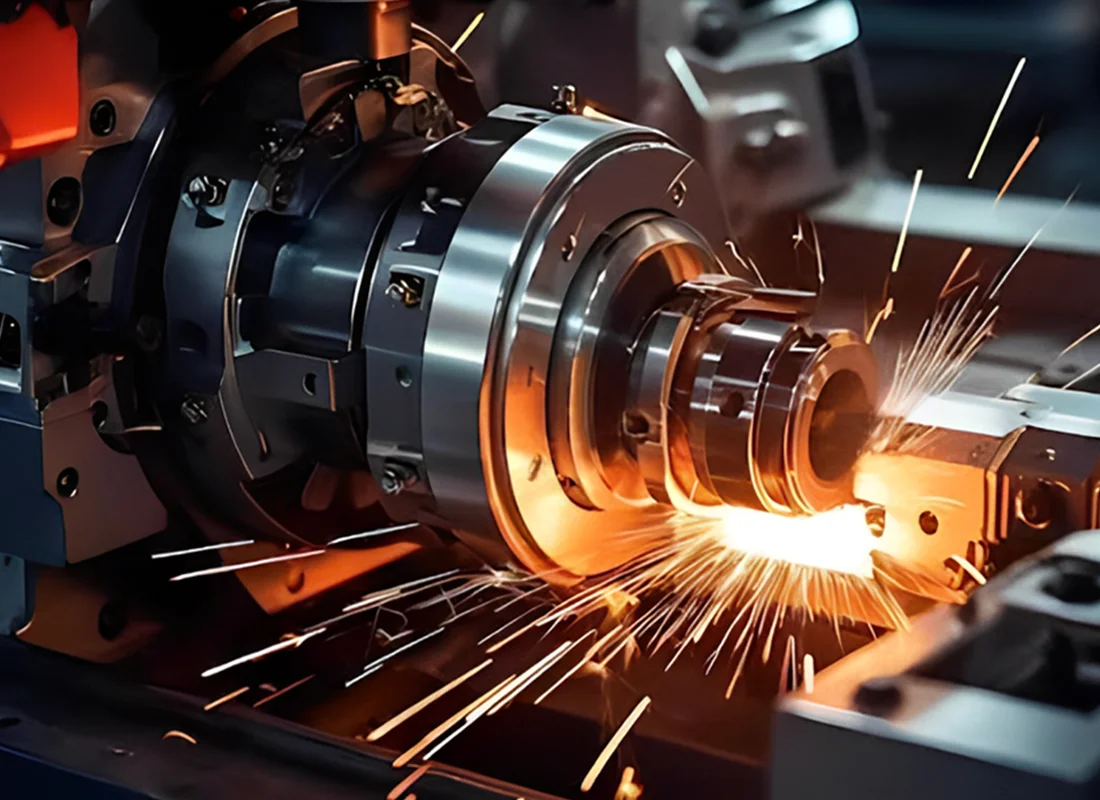32/34, Jintan Udhyognagar, Behind Gas godown, Surendranagar – 363 002, Gujarat, INDIA.

What is Precision
Surface Grinding
and Why It’s Essential?
Introduction:
You know that satisfying click when a perfectly machined gear meshes into place? Or the silent relief when a surgeon’s blade glides through tissue without a snag? Behind these small miracles lies a process most folks never think about: precision surface grinding.

This isn’t just “making things smooth” it’s the art of shaving off slivers of material thinner than a human hair to hit tolerances that keep rockets airborne and pacemakers ticking. Let’s dig into why this behind-the-scenes hero deserves a standing ovation.
What is Precision Surface Grinding?
Precision surface grinding is like the Swiss watchmaker of manufacturing. Using a spinning abrasive wheel, it removes material in passes so precisely they’re measured in microns (a micron is 1/100th the width of a human hair). The goal? To create parts so flat, so dimensionally exact, that they fit, function, and endure under conditions that would make lesser components crumble.
How does Precision Surface Grinding Actually Work?
- A workpiece made of metal or ceramic gets locked onto a magnetic chuck.
- A grinding wheel made of abrasive grit like diamond and aluminium oxidespins at brutal speeds.
- The wheel kisses the surface which shaves off layers as thin as 0.0001 inches per pass.
- Coolant floods the zone to keep things cool and flush away debris.
But here’s the kicker: this isn’t just about smoothness. It’s about control. Think of it as the difference between a chainsaw and a scalpel. One hacks; the other dissects with intention.
Advantages
Precision surface grinding isn’t a vanity project. Industries live or die by it:
- Aerospace: Jet engine turbine blades endure temperatures that melt steel. A microscopic uneven spot? That’s a turbulence hotspot waiting to crack under stress. Up to 12% engine efficiency is achieved because of turbine blades manufactured via precision grinding.
- Medical: A hip implant with a rough surface isn’t just uncomfortable—it’s a breeding ground for bacteria. Grinding polishes it to near-glass smoothness.
- Automotive: Your car’s transmission relies on gears ground to exact thicknesses. A 0.001-inch error? Say hello to whining noises and a $4,000 repair.
- Energy: Wind turbine shafts need flawless surfaces to spin for decades without wearing out their bearings.
Why a Normal Grinder Won’t Cut It?
Old-school grinding was brute force. Modern precision grinding is a science. Here’s why it’s irreplaceable:
- Heat Management: Grind too fast, and you’ll soften hardened steel. Precision grinding’s slow, calculated passes keep temps low.
- Material Versatility: It handles everything from squishy aluminium to nightmare materials like Inconel (a jet engine alloy that laughs at most tools).
- Profit Protection: Screw up a batch of aerospace brackets, and you’re not just eating material costs—you’re paying penalties for delayed deliveries.
A toolmaker friend once grumbled about a “simple” mould job. His cheap grinder left tiny ridges on a steel die. When the client injected plastic, every part had a visible line. What does the rework cost? 20 hours of overtime and a lost client. Precision surface grinder equipment would’ve nailed it on the first try.
Read related: Importance of Surface Grinding in Precision Engineering
The Importance of Wheel Selection and Setup
Precision grinding isn’t plug-and-play. Mess up these details, and you’re toast:
- Abrasive Grit: Use aluminium oxide on tool steel, and you’ll be grinding until the next ice age. Switch to CBN (cubic boron nitride), and it slices like butter.
- Wheel Dressing: Over time, wheels get clogged with metal bits (like a pencil eraser gunked up with lead). Dress them with a diamond tool, and they’re sharp again.
- Fixturing: Clamp a part wrong, and the grind force will twist it like a pretzel. Magnetic chucks and custom jigs are lifesavers.
One shop owner learned this the hard way. He tried grinding ceramic insulators with a standard wheel. The ceramic chipped. After switching to a diamond-embedded wheel? Flawless results.
Manual vs. CNC: The Grinder’s Dilemma
- Manual Grinders: Operated by seasoned pros who “feel” the grind. Perfect for one-off parts or prototypes. Downside? Human error. One machinist told me about a rookie who over-grounds a titanium aircraft bracket by 0.005"—a $3,000 scrap lesson.
- CNC Grinders: Robots follow digital instructions to the micron. Ideal for batches of 500+ identical parts. But! A glitch in the code once turned a batch of medical screws into expensive confetti.
Key Factors to Select Surface Grinding Machine Manufacturers
- Ask for Certifications: ISO 9001 is table stakes. For aerospace, demand AS9100.
- Demand Samples: If they won’t grind a test piece for free, walk away.
- Check Their Coolant Game: Smelly, recycled coolant breeds bacteria that pit surfaces. Top shops use filtered systems.
The Bottom Line
In an era of 3D printing and AI, you’d think grinding would be obsolete. Nope. Until we can print turbine blades that don’t need finishing or grow replacement hips in a lab, precision surface grinding remains the bridge between raw and reliable.
